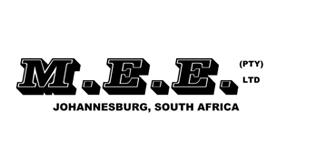Plastic welding systems have become indispensable in various industries, offering a reliable method for joining plastic components with strength and precision. Whether automotive manufacturing, electronics assembly, or plumbing, plastic welding is crucial in creating durable and seamless connections. This comprehensive guide delves into the intricacies of plastic welding, exploring the process, techniques, and applications of this versatile joining method.
Understanding Plastic Welding
Plastic welding is a process that involves melting and fusing two or more pieces of plastic to form a cohesive bond. Unlike traditional welding methods used with metals, plastic welding relies on the thermoplastic properties of plastic materials, which soften when heated and solidify upon cooling. The key to successful plastic welding lies in achieving the optimal temperature and pressure to ensure proper fusion without compromising the integrity of the materials.
The Plastic Welding Process
While specific techniques may vary depending on the type of plastic and the desired application, the basic steps of plastic welding typically include:
- Surface Preparation: Before welding, it’s essential to clean and prepare the surfaces to be joined. This involves removing any contaminants, such as dirt, grease, or oxidation, that could interfere with the welding process.
- Heating: Plastic welding systems employ various heating methods to raise the temperature of the plastic materials to their melting point. Common heating techniques include hot air, hot plate, infrared, and ultrasonic.
- Joining: Once the plastic reaches the appropriate temperature, the heated surfaces are brought into contact, allowing them to meld together. Pressure may be applied to ensure proper fusion and eliminate voids or gaps in the weld.
- Cooling: After the welding process is complete, the fused plastic is allowed to cool and solidify, forming a strong and durable bond. Proper cooling is essential to prevent premature failure of the weld.
Types of Plastic Welding Systems
Plastic welding systems encompass a range of techniques and technologies suited to different materials and applications. Some common methods include:
- Hot Air Welding: Uses a stream of heated air to soften and fuse thermoplastic materials, commonly used for welding PVC (polyvinyl chloride), HDPE (high-density polyethylene), and PP (polypropylene).
- Hot Plate Welding: This involves heating plastic components on a heated plate until they reach the desired temperature, then pressing them together to form a weld. Ideal for larger parts and complex geometries.
- Ultrasonic Welding: Uses high-frequency ultrasonic vibrations to generate heat and create friction between plastic parts, resulting in rapid and precise welding. Particularly suitable for small, intricate components in electronics and medical devices.
- Spin Welding: Rotates one plastic component against another at high speed while applying pressure, causing frictional heat to melt and fuse the materials. Commonly used for joining thermoplastics with circular or cylindrical geometries.
Plastic Welding Applications
Plastic welding finds applications across a wide range of industries, including:
- Automotive: Welding plastic components in vehicle interiors, bumpers, and fuel tanks.
- Construction: Joining plastic pipes, sheets, and fittings in plumbing, roofing, and signage.
- Electronics: Assembling electronic enclosures, connectors, and housings with precision welding techniques.
- Packaging: Creating sealed seams in plastic packaging materials for food, pharmaceuticals, and consumer goods
Contact M.E.E. for details
Plastic welding systems offer a versatile and efficient means of joining plastic components, providing strong and reliable bonds in multiple applications. By understanding the process of plastic welding and the various techniques available, manufacturers and fabricators can select the most suitable method for their specific needs, ensuring quality, durability, and efficiency in their production processes. As advancements in materials and technology continue to expand the capabilities of plastic welding systems, this essential joining method will remain at the forefront of modern manufacturing.
Contact us today for more information about our plastic welding systems.

